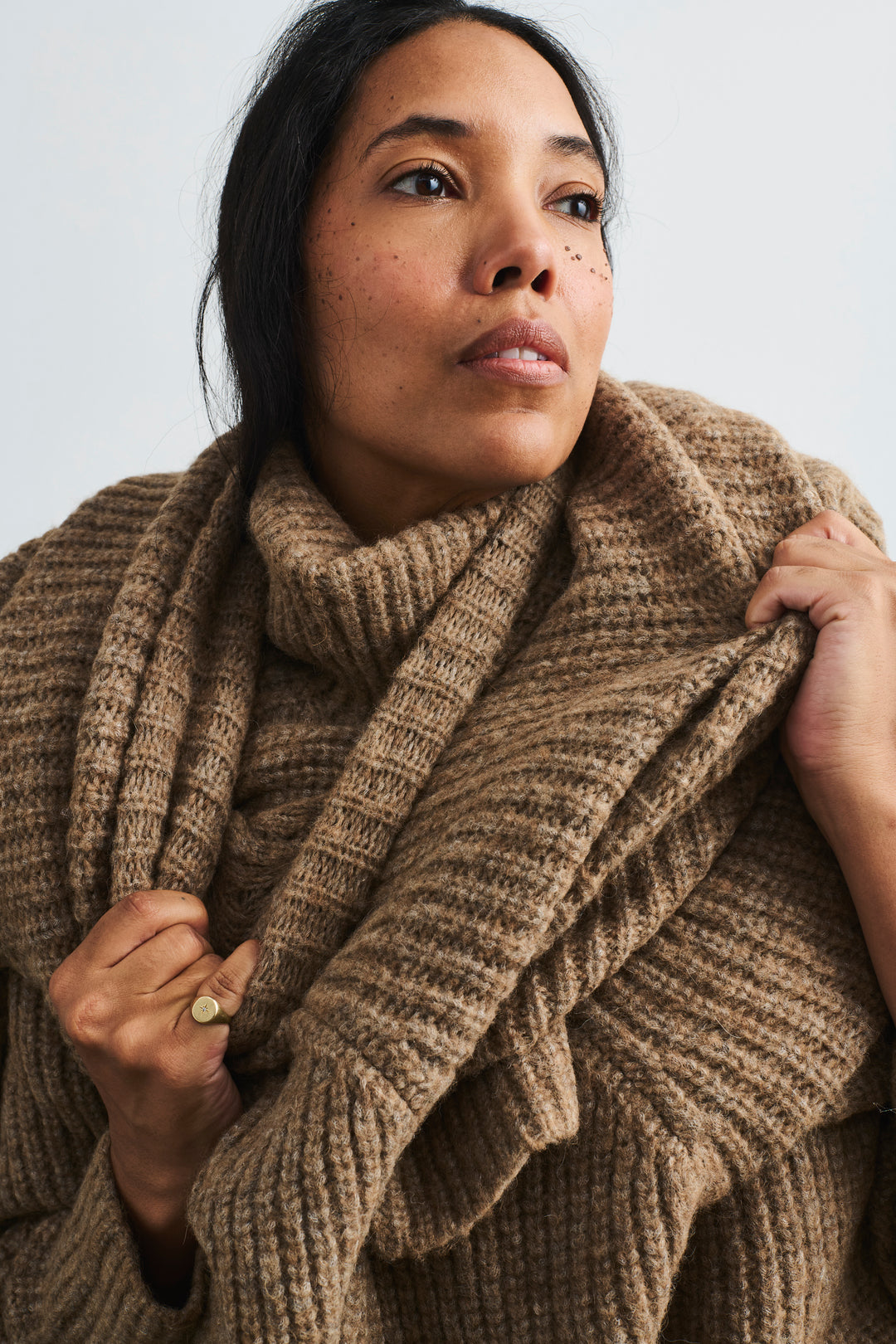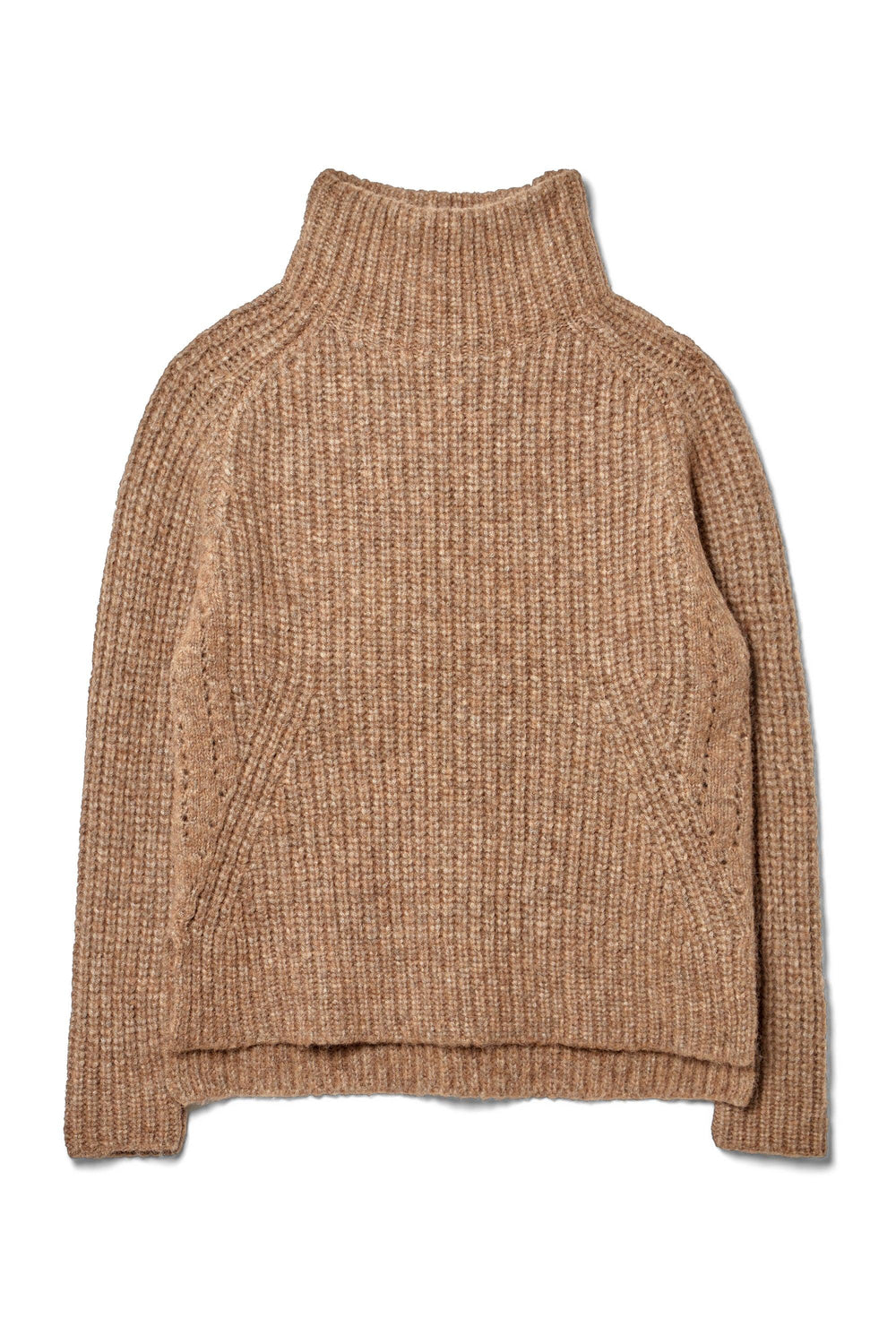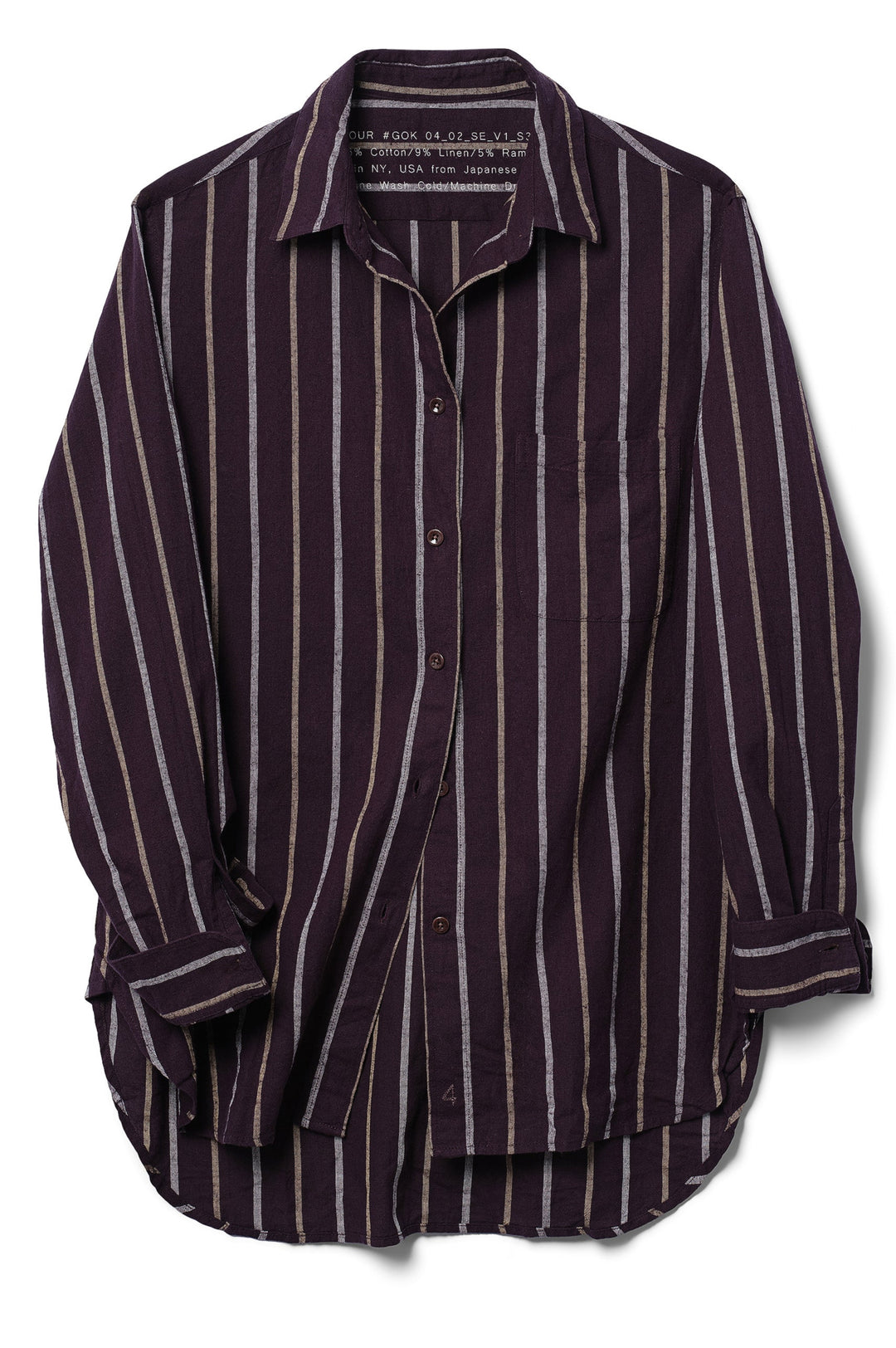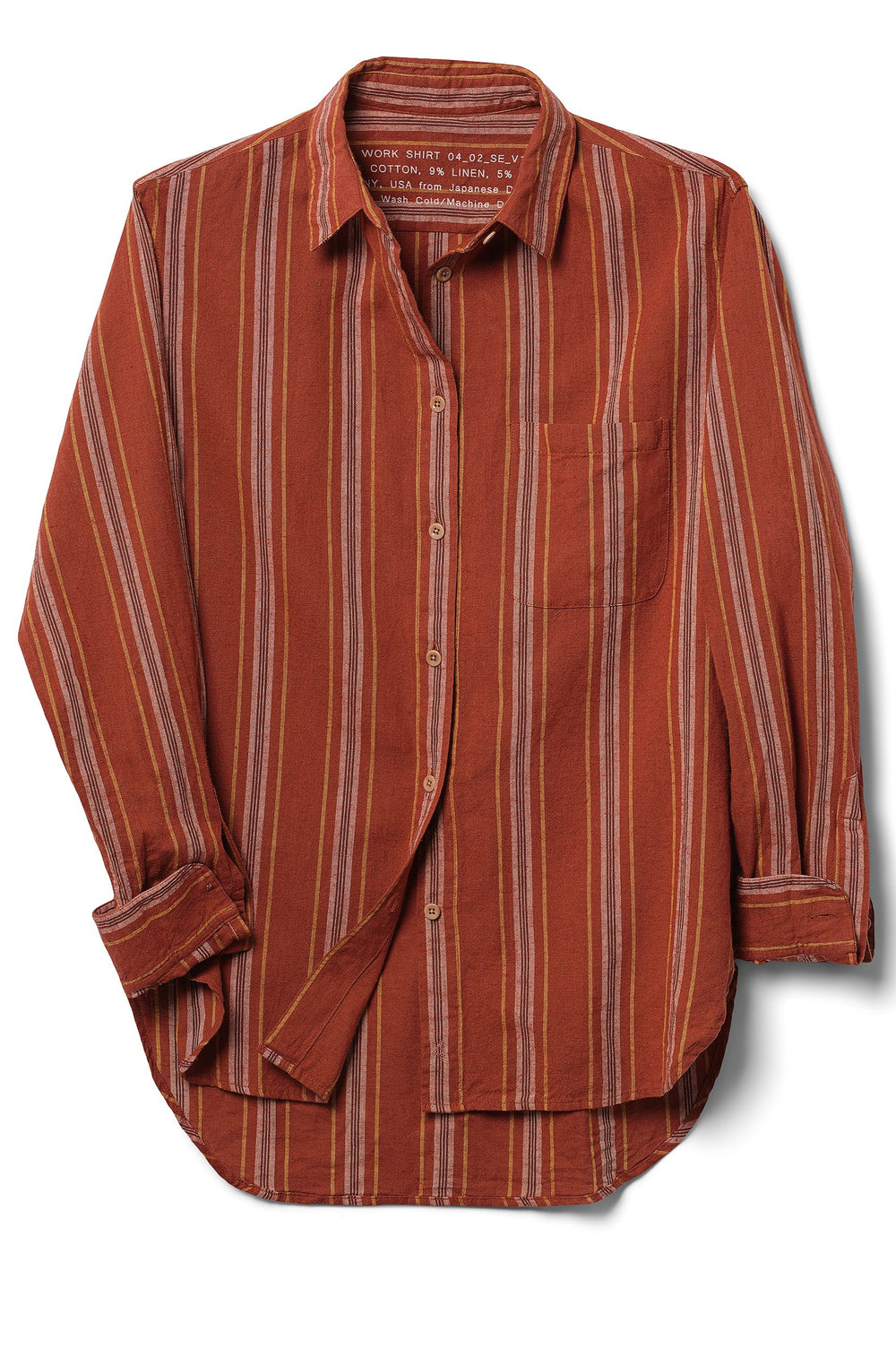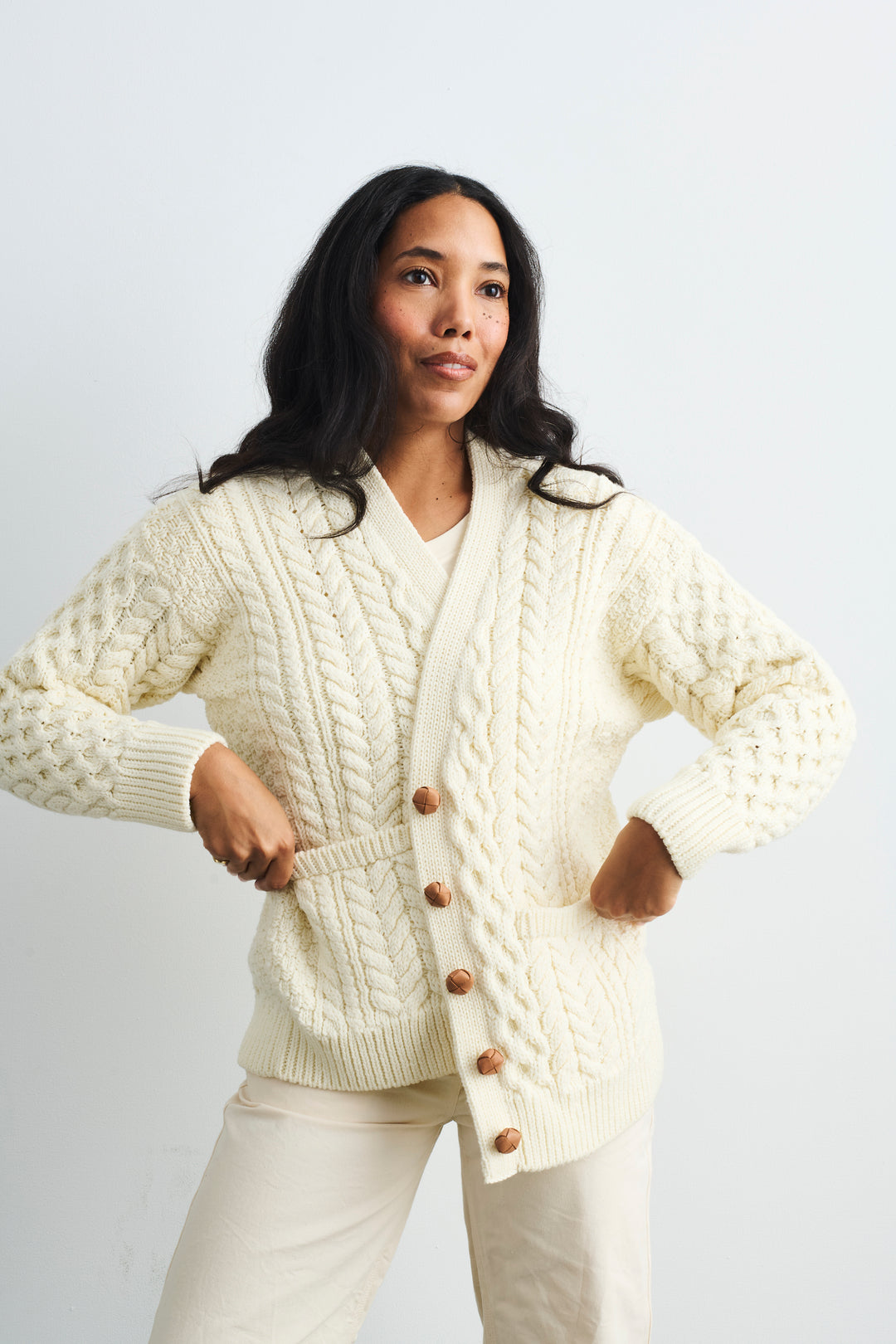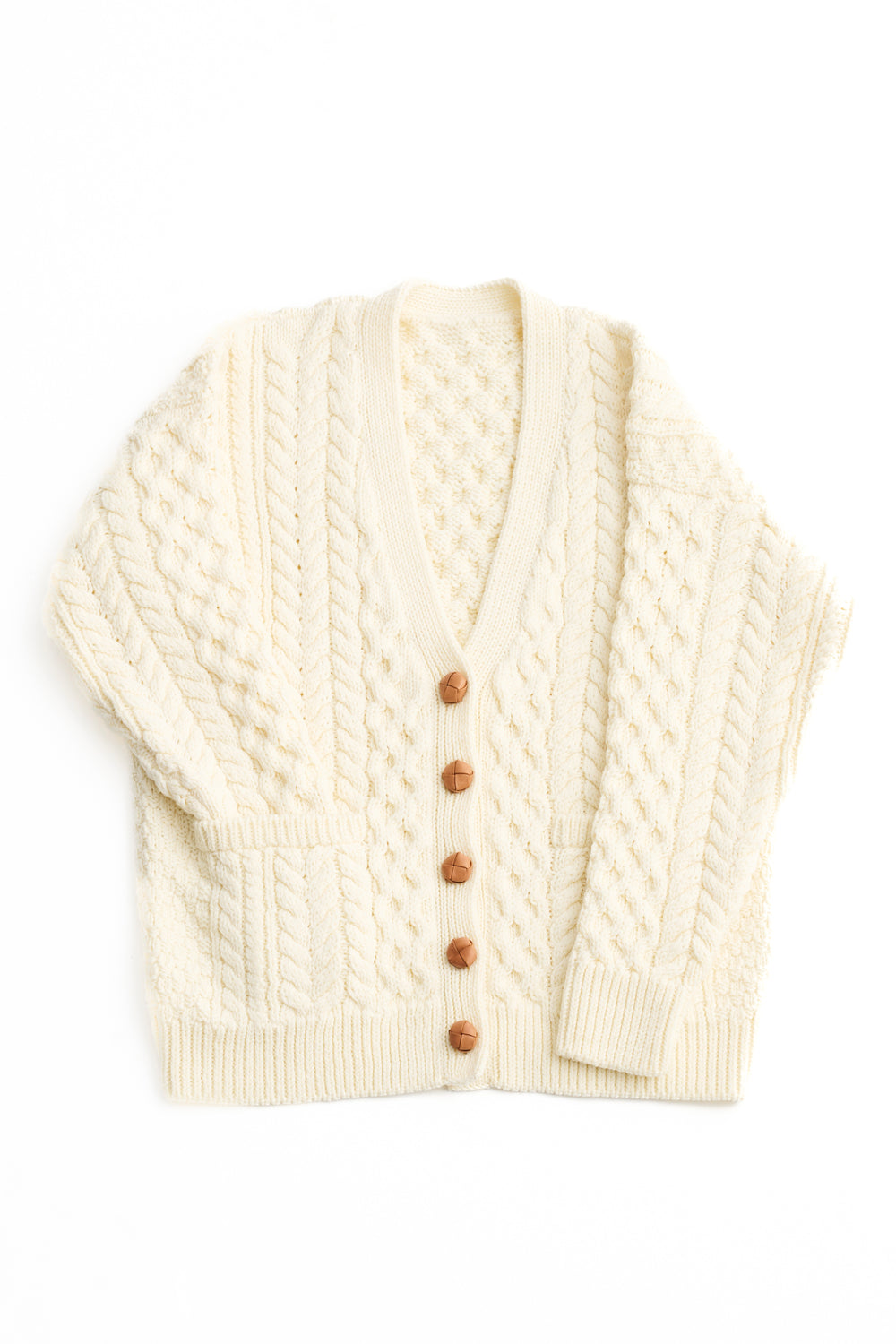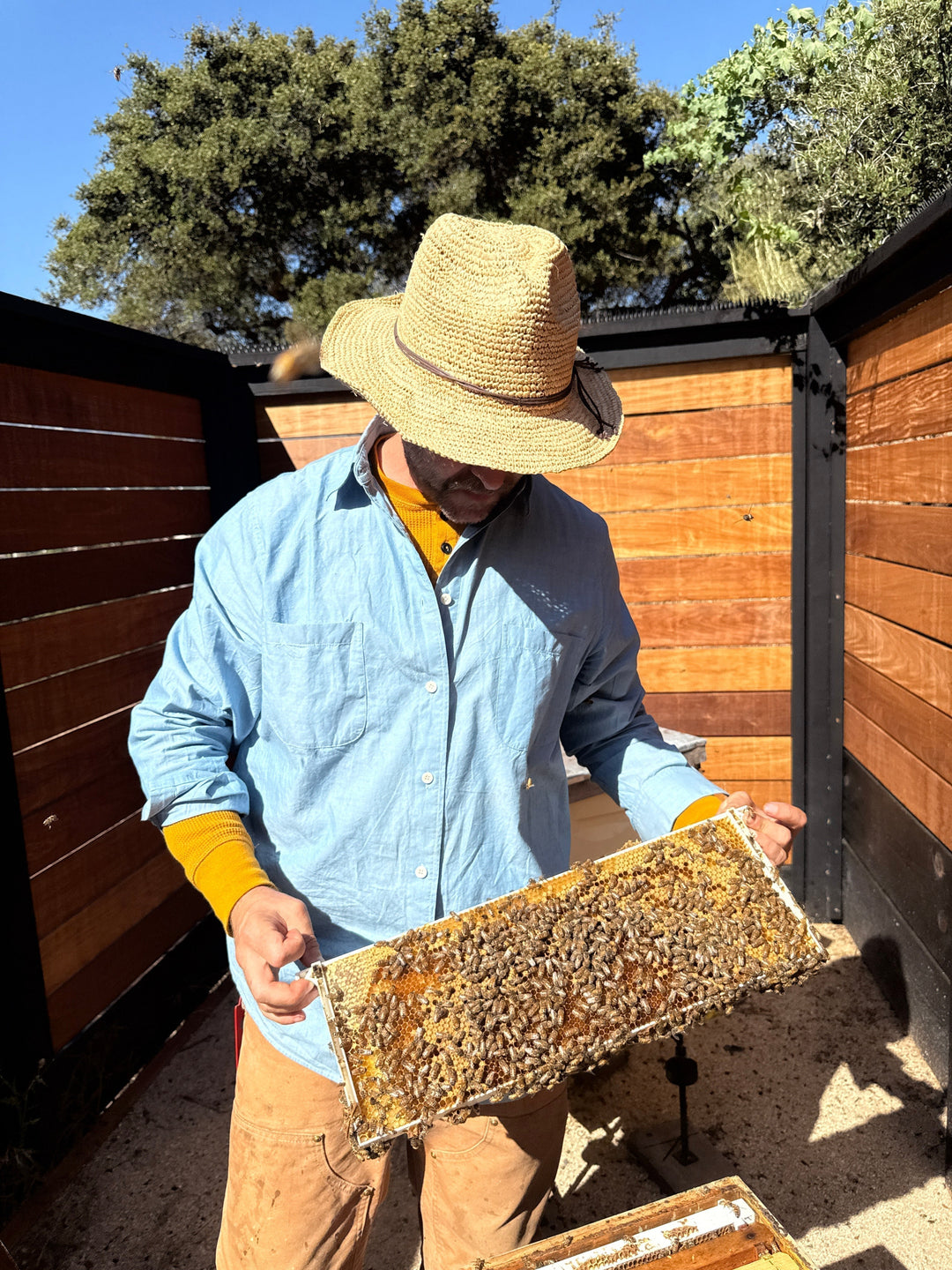11/2022 Rabbit Jacket Update
Backstory on Rabbit & Small batch production
I met Rabbit in 2014. I was just so into her as a maker with this tiny mill upstate, Thistle Hill Weavers, that she ran like a bespoke couture fabric house. It was so incredible – this combination of that level of quality with her rural situation was so interesting. I just wanted to work with her.
Were you looking for a vendor at that time, or was it more coincidental?
I was working in apparel and fashion and she was the aunt-in-law of one of the women on my design team. They had gone to visit her and she came back from that weekend upstate and was like Karuna, you have to meet this person and let's just go crazy, you're gonna die. So I met Rabbit the next time she was in the city. She came by our studio and it was one of those things where you meet people and you feel like you've known them forever.
You just have this really deep conversation from the first minute you sit down together and I’ve wanted to work with her ever since. She's really special person.
When we started FOUR, she was the first person we collaborated with to make the Rabbit Jacket. She weaves the fabric, she orders the yarn, and they hand rack the loom. It's an old piece of weaving equipment. It's still electric, but there's a lot of handwork. It's very artisanal. They finish the fabric and send it down to New York City where we have a small run production factory, and they cut and sew the jacket. Thistle Hill can't really make more than 200 yards at a time because the looms are beautiful antique looms. Initially, we were buying from all American companies to purchase the yarn - some spun the yarn themselves and imported the fibers, but they were all Rabbit's local sources.

Yarn issues in Covid
During the pandemic, one of the American wool spinners we had been using since the beginning changed hands, and all of a sudden the quality and the finish of the yarn wasn't up to standard.
She was literally in the middle of weaving a run of fabric for us and the yarn started to break.
It hadn't been finished properly and the new owner just didn't have the expertise to give us the quality that we were accustomed to. So it put us in a situation where we had to basically re-source the wool in the middle of production.

Improving & Evaluating Quality
We took that opportunity to evaluate where we thought the best yarn in the world was made, ensuring the source was part of the RWS (Responsible Wool Standard). We had to first change our wool and then test that wool. I visited one of the Italian mills I've been working with for decades called Tollegno. It’s a really old family mill in Northern Italy and they have done a lot of work on the supply chain side in terms of sustainability. They have traceable and responsibly-sourced wool, and their quality is second to none. Sadly, we had to move from American spun wool to imported Italian wool, but we there are no other spinners in the US that could achieve same quality, quantity and consistency, so we decided to upgrade and import the Italian wool.

Current Status
Testing is complete and Rabbit is currently making the first run of our double weave fabric with that new Italian wool and it's coming out beautifully. This will get cut into the next run of Rabbit Jackets for the first 40 people on our waitlist. And then we're going to try to get back on our normal production schedule from there. There will always be a limited amount of Rabbit Jackets we can make, we really can't make more than 300-400 pieces a year.
But the truth is, it's also part of the beauty of it - working with these small mills and supporting these handcrafted, traditional textiles with inherent limitations.
We have very patient customers that we appreciate, who have had to wait for more than six months for their Rabbit Jacket. We really do believe it's worth the wait as it's such a special piece.

Unfortunately, the Rabbit Jacket is never going to really be in inventory at this point. We've experienced too many delays beyond our control. We have a pretty long waitlist, and then every time a Collector signs up, they also get priority. So if people are waiting until they're back in stock, it may never happen. We encourage you to get on the waitlist or becoming a Collector. We want to set realistic expectations so anyone who pre-purchased their Rabbit Jacket before June 2022 will receive theirs this year. Anyone who purchased it after June 2022 will receive it by late winter. Once we are caught up with everyone who has pre-purchased we will invite those on the waitlist to make their purchase. Anyone on the waitlist now will not receive theirs until the second half of 2023.
Rabbit Goody
THE NAMESAKE

This entirely unique and extraordinary fabric took us a year to develop with master weaver and incredible woman, Rabbit Goody, at Thistle Hill Weavers in Cherry Valley, NY. Weaving since her teen years, Rabbit, our namesake, is a much sought-after textile historian and magician with early power looms. Fascinated and intrigued by the transition from hand weaving to powered technology, Rabbit has built a mill specializing in the use of Crompton & Knowles looms that date between the 1890’s and the 1960’s. There are less than a handful of mills running these looms and no American companies remain that produce textile equipment.
Thistle Hill Weavers
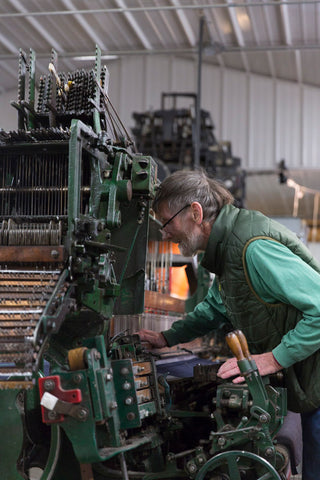

For over 26 years Thistle Hill Weavers have been producing ingrain carpet, special Jacquard’s, damask, venetian carpet, dimities, gossamer drapery, worsted camblet, baize, and woven coverlets. Rabbit Goody’s vast repertoire is possible, in part, because of her ability to make the looms do things they were never designed to do because they are mechanical rather than electronic making it possible to fabricate new machine parts and change them when necessary, giving the designers she works with unheard of flexibility.
Custom Fabric


For the Rabbit Jacket, we developed a double weave based on a French upholstery technique that gave us the ability to create a durable, denim-like exterior while simultaneously creating a bottom layer with a more open weave structure to allow the silk and wool to bloom into a soft, sweater like interior.
Rabbit Jacket
When we were dreaming about what FOUR could be, we fantasized about a collection of clothing that we would keep, repair and pass down to the next generation. Tired of the endless stream of fast fashion we were craving a kind of sustainability that would endure not only from a material perspective but from a kind of design that was imbued with a timeless modernism that had form and functionality at it’s core.
Hanten Jacket

Our inaugural garment for permanent collection, 4.1 th Rabbit Jacket, is inspired by the traditional Japanese hanten and the ritual of exchange between work and home that it embodies. As new mothers and professional working women, we felt this transitional garment that works both inside and outside the home in casual and formal scenarios, is a perfect debut. The hanten first became popular during the Edo period, especially worn by common folk in the late 18th century. Unlike other similar coat styles like the haori, the hanten wasn’t restricted to the upper classes or a particular gender. The hanten could be worn by anyone for any number of occasions both in and outside the home. Thanks to it’s durable, lightweight design, it provided both warmth and breathability, making the hanten an all season garment. Traditionally worn while studying, cooking, gardening, attending festivals or running errands, the extreme versatility has made the Hanten jacket a staple of the Japanese wardrobe even today.
4.1 The Rabbit Jacket

Continuing in this tradition, the Rabbit Jacket has an elegant shape with a generous fit for layering and side slits for pant pocket access. Feel like going out without a bag? The oversized pockets fit all your necessities with a clean look, while 3/4 sleeves stay out of your way. The Rabbit Jacket is made of a luxuriously durable, hand-woven fabric which will maintain its shape and classic look without extra care. When a wash is in order it should be washed gently in cold water and hung to dry.
YOU’VE GIVEN 4% BACK (again)!
This year we've almost doubled your donation, thank you Rabbit Jacket lovers!
Family Planning of South Central New York continues to work to increase access to local, affordable, compassionate reproductive medical care at our medical centers in Binghamton, Norwich, Oneonta, Sidney, and Walton, NY.
This year's donation of $4,153.64 goes towards the continued effort to care for our upstate community.
We are excited to announce that we will be opening a medical center in Cortland in 2022. The center - our sixth in central New York - will be located within Family & Children's Counseling Services facility at 165 Main Street in downtown Cortland. The September 2020 closure of the Jacobus Center for Reproductive Health left vulnerable and at-risk Cortland County residents without a New York State Department of Health licensed family planning provider. Our new medical center will operate four days a week, offering affordable, compassionate gynecological and reproductive medical care services. “With Family & Children’s Counseling Services providing affordable, accessible outpatient behavioral health care and prevention services at their Main Street facility, it was just a natural fit for us to collaborate and co-locate as providers,” Debra Marcus, Family Planning of South Central New York's Chief Executive Officer, said.
Overall, even during a global pandemic, our medical centers served nearly 8,000 patients in more than 11,000 visits last year. We navigated changes in service delivery, including telehealth, increased levels of personal protective and cleaning equipment, and appointment limits based on guidance from the New York State Department of Health. We are proud to say that we remained open, our dedicated staff remained resilient, and we served the patients who needed us most during this time.
FOUR was founded on the idea of creating women’s apparel within a circular community. Honoring the makers, the wearers and the values that connect us all. We’ve committed to giving 44% of our profits back to the community where our products are made and we’re proud to say we’ve made our first donation!
When we began working with Rabbit at Thistle Hill Weavers in Cherry Valley NY, we spoke about the issues that affect their community in rural upstate New York. Rabbit explained that the community is full of farmers, so food was plentiful, but being a rural community, people have to travel long distances to get medical care and often went without. With our focus on women, we identified the main provider of medical care to women in the community: Family Planning of South Central New York, Oneonta, a 45 minute drive from the mill.
We were immediately inspired by FPSCNY’s mission: to advocate and provide individuals, families and organizations in our region with information, education and health care services pertaining to human sexuality and reproductive health in a private and confidential manner, respectful of all beliefs, supporting individual freedom of choice and responsibility.
They promise to: Serve all patients, offer discounted fees for patients who qualify and not deny services based on a person’s: Race, Age, Gender identity, National Origin, Sexual orientation, Disability, Inability to pay or Religion.
We spoke with Debra Marcus, CEO, and Alexis Savidge, Director of Development of FPSCNY:
What are the most impactful ways FPSCNY is serving women in the upstate New York community?
Debra and Alexis: Family Planning of South Central New York has been working to improve the overall health of our community for 80 years. We provide women (and men) in Broome, Chenango, Delaware, and Otsego counties of upstate New York with basic reproductive and gynecological medical services at our five medical centers in Binghamton, Norwich, Oneonta, Sidney, and Walton. These services include annual exams, cancer screenings, contraception, including Long Acting Reversible Contraception (LARCs), Sexually Transmitted Infection (STI) testing and treatment, rapid HIV testing, Pre-Exposure Prophylaxis (PrEP) for HIV, and rapid Hepatitis C testing. We accept Medicaid, most commercial insurers, and offer a sliding fee scale, ensuring that cost is not a barrier to receiving services. The patients we see are often high risk, low income individuals who often have difficulty navigating the traditional health care environment, with 75% of our patients having incomes at or below 150% of the federal poverty level.
We do more than just provide services - we empower women (and men) to meet their own health needs.
How have you innovated to serve your community since Covid-19?
Debra and Alexis: In order to ensure continued services during this unprecedented time, we offer telehealth visits - both by phone and video - for patients who have needs that do not require an in-person visit. Our talented staff were able to quickly mobilize a telehealth program within just a few short weeks. However, it is important to note that the vulnerable population that we serve often do not have a reliable device, access to broadband internet, or even enough minutes to complete a call. We know that it is crucial that we remain open during this time and we are fortunate that in New York State, our Governor recognized family planning services as essential from the beginning, so we were able to remain open.
Our education staff, which typically provides in-person, in-school education services, have developed an online curriculum featuring topics such as STI prevention, consent, social media safety, healthy relationships, etc. to share with teachers via platforms such as Google Classroom, Blackbaud, and Schoology. They have also developed a Zoom Parent Workshop Series where parents can interact with an education on topics such as social media literacy/trends, puberty, parent/child communication activities, etc. Our educators also began a social media campaign called “Quarantine Chronicles,” which offers daily insights, information, and resources on our organization's Instagram page and uses popular hashtag catchphrases to generate traffic. This targeted campaign is intended to reach teens who are not able to engage with us in-person at this time.
What did you think when we approached you about the donation? Was it strange to have a clothing brand want to become involved?
Debra and Alexis: We were so excited! We are always so humbled by the generous support of our community, especially during this uniquely tough year. Earlier in the year, at the direction of the NYS Department of Health, we rescheduled all annual and initial exams for nearly two months, resulting in significantly reduced revenue. In addition, New York State has notified us, along with other non-profit and state-funded entities, that the payments on our contracts will be cut by 20% for an unidentified amount of time. Though we hope this is temporary, we are well aware of the toll that COVID-19 has had on the state and are expecting that state financial assistance may continue to be decreased in the future. Any and all support from our community means that we are able to continue to provide critical reproductive and gynecological medical care for years to come. It is more important than ever that we not only remain open, but that we remind people that we are here for them, regardless of income, insurance coverage or immigration status. Sex, pregnancy, and reproductive health needs do not pause during a pandemic -- these services are just as critical for people now as they were before this began.
The Facts:
Donation Amount: $2,903.67 has been donated to Family Planning of South Central New York (FPSCNY) www.fpscny.org
Inspired by their mission? Donate today and help them receive a A Community Thrives grant by reaching their goal of $6,000 before October 16th!
How the donation amount is calculated: Each company defines “profit” slightly differently in how they are structured, so we had to figure out what that meant for FOUR. Since this was our first donation of many to come, we kept it simple. We took the total retail value of Rabbit Jackets we have sold to date, subtracted the cost of developing the fabric, the prototypes and the cost of making the actual garments. We then calculated 44% of the remainder and came up with our donation. We did not include any of our operational costs, which we will probably have to calculate in the future, but we wanted this first donation to be meaningful and truth be told, we’re still working on how this business model works and evolves. We believe in experimentation and transparency, so we will keep you informed as our model evolves!

















